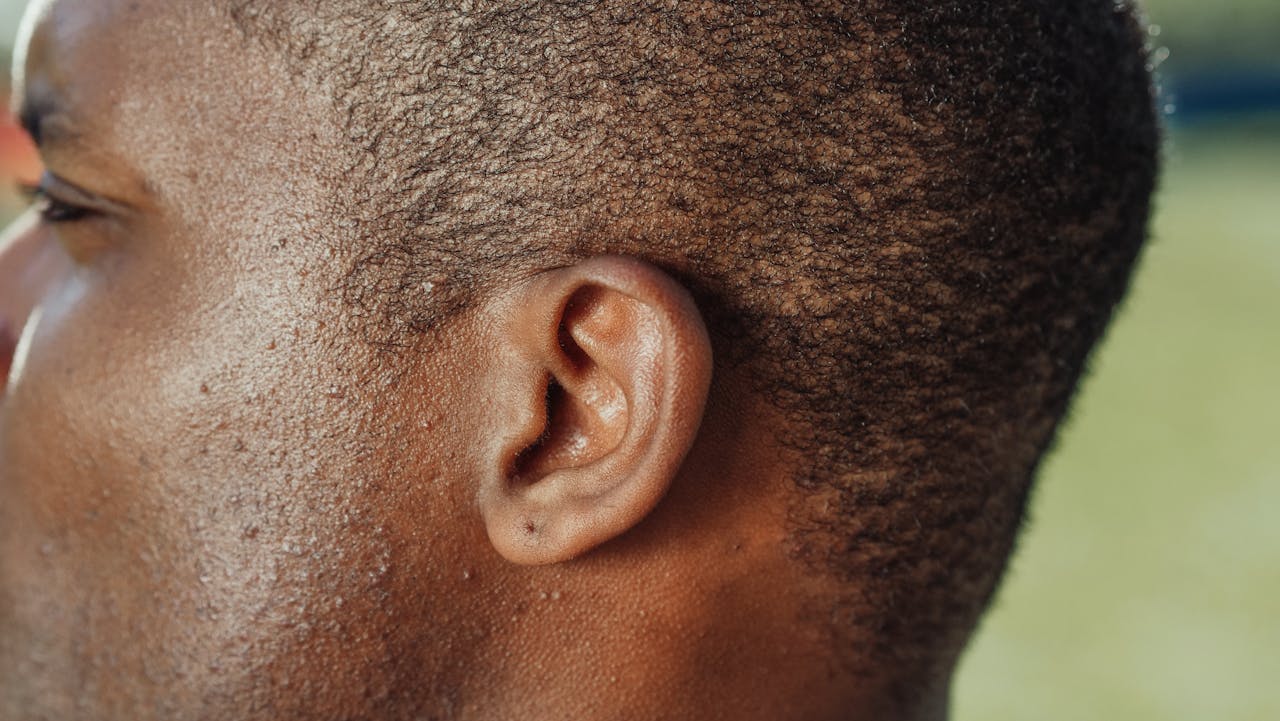Hearing is a critical sense that connects us with the world, enables communication, and allows us to enjoy the beautiful sounds around us and noises, too. Hearing is very important as it keeps our bodies in balance. However, some people experience hearing problems at some point in their lives. We will explore common hearing issues, their causes, symptoms, and ways to manage them to maintain optimal auditory health.
1. Age-Related Hearing Loss (Presbycusis)
Presbycusis is the progressive loss of hearing in both ears. It’s a typical issue related to ageing. Hearing loss affects one in three persons over the age of 65. Some people are first unaware of the change in hearing due to the gradual nature of the shift. The capacity to perceive high-pitched sounds, such as a phone ringing or a microwave beeping, is typically affected. Most of the time, hearing low-frequency sounds is unaffected.
Causes:
Presbycusis is caused by a combination of factors that affect how your ears hear and transmit sound signals to your brain. This can be caused by:
- Degeneration of Inner Ear Structures: Over time, the sensory cells (hair cells) in the inner ear that detect sound and transmit it to the brain begin to deteriorate.
- Genetic Factors: A family history of hearing loss can increase the likelihood of developing presbycusis.
- Cumulative Exposure to Noise: Long-term exposure to loud noises can damage the inner ear and contribute to hearing loss.
- Age-Related Changes in the Ear: Changes in the ear canal and the auditory nerve can also affect hearing.
Symptoms:
You may have presbycusis when you notice these symptoms:
- Difficulty Hearing High-Pitched Sounds: This is often the first noticeable symptom. It can include difficulty hearing the voices of women and children because of the high pitch of their voices or certain consonant sounds.
- Need help understanding conversations, especially with background noise.
- Frequently Asking Others to Repeat Themselves: This can be frustrating for both the person with hearing loss and those they are communicating with.
- Tinnitus: A ringing or buzzing noise in one or both ears, which can accompany hearing loss.
This problem can be managed with:
- Regular hearing tests, especially after the age of 50.
- Hearing aids. Modern hearing aids are discreet and offer advanced features to improve sound quality.
- Assistive listening devices. These can include amplified telephones, TV listening systems, and personal amplifiers that help in specific situations.
- Communication strategies such as speaking clearly, facing the person while talking, and reducing background noise can help improve communication.
- Joining support groups and educating family members about hearing loss can provide emotional support and practical tips for better communication.
2. Noise-Induced Hearing Loss
This can happen due to a single loud noise (like an explosion) or prolonged exposure to noisy environments. Hearing loss can affect people of all ages and is preventable with proper protective measures.
Causes:
- Prolonged exposure to loud noises (e.g., concerts, industrial work).
- Sudden exposure to loud sounds (e.g., explosions).
Symptoms:
- Ringing or buzzing in the ears (tinnitus).
- Muffled hearing.
- Difficulty understanding speech, particularly against background noise.
Management
Here is how you can handle this problem:
- Use ear protection in noisy environments.
- Limit exposure to loud sounds.
- Use hearing aids or other assistive devices for severe cases.
3. Ear Infections
Ear infections are common ailments affecting individuals of all ages, but they are particularly prevalent among children. These infections occur when a bacterial or viral infection affects the middle ear—the air-filled space behind the eardrum that contains the tiny vibrating bones of the ear. Ear infections can be painful due to inflammation and fluid buildup.
Causes:
- Bacterial or viral infections such as cold, flu and sinus infections
- Allergies cause fluid buildup in the Eustachian tubes (the tubes that connect the middle ear to the back of the throat), leading to ear infections.
- Swelling of the Eustachian tubes, which adenoids can also cause.
Symptoms
- Ear pain and discomfort.
- Yellow, clear, or bloody fluid draining from the ear, indicating a ruptured eardrum.
- Temporary hearing loss.
- Fever
- Dizziness or balance problems due to the ear’s role in maintaining balance.
Symptoms in Children
- Irritability or fussiness
- Trouble sleeping or loss of appetite.
Management
- Medical treatment with antibiotics or antiviral medications.
- Over-the-counter pain relievers.
- Keeping the ears dry and clean.
4. Tinnitus
Tinnitus is the perception of sound when no external sound is present. Often described as a ringing in the ears, tinnitus can also manifest as buzzing, hissing, clicking, or roaring. It can vary in pitch from a low roar to a high squeal and may be present in one or both ears. Tinnitus is a common condition affecting millions worldwide and can significantly impact quality of life.
Causes:
- Exposure to loud noises.
- Ear infections or injuries.
- Stress and anxiety.
- Age-related hearing loss.
Symptoms:
- Persistent ringing, buzzing, or hissing sounds in the ears.
- Interference with concentration and sleep.
Management:
- Avoiding loud noises and using hearing protection.
- Stress management techniques, such as meditation.
- Cognitive-behavioral therapy to cope with symptoms.
- Sound therapy or white noise machines.
5. Earwax Blockage
Earwax blockage occurs when earwax(cerumen) accumulates and blocks the ear canal to the point that it causes symptoms or prevents proper ear assessment.
Causes:
- Overproduction of earwax.
- Insertion of objects (e.g., cotton swabs) into the ear canal.
- Certain anatomical variations in the ear canal can make it easier for earwax to become trapped and accumulate.
- Frequent use of hearing aids, earplugs, or earbuds can prevent earwax from naturally migrating out of the ear canal, leading to buildup.
- As people age, earwax can become more complex and less likely to move out of the ear canal naturally.
Symptoms:
- Fullness or pressure in the ear.
- Reduced hearing on the affected side.
- Ear pain or discomfort.
Management:
- Over-the-counter ear drops to soften wax.
- Professional ear cleaning by a healthcare provider.
- Avoiding the use of cotton swabs inside the ear canal.
When To Seek Professional Help
If you’re experiencing sudden hearing loss, persistent ear pain, or symptoms like tinnitus, it’s time to consult an audiologist or healthcare provider. They can diagnose the issue and recommend appropriate treatments, such as hearing aids, medication, or surgery if necessary.
Great news for our community!
Chadderton Opticians Clinic now offers comprehensive hearing care. In collaboration with the Hearing Care Partnership, we’re dedicated to providing top-notch hearing care services to the Oldham area.
Conclusion
Understanding common hearing problems and how to manage them is essential for maintaining your auditory health. Regular hearing check-ups, protecting your ears from loud noises, and seeking professional help are key steps to ensure you can enjoy the sounds of life to the fullest. Prioritise your hearing health today and take proactive steps to preserve this vital sense.
If you have any concerns about your hearing, don’t hesitate to contact our hearing care professionals for guidance and support.


